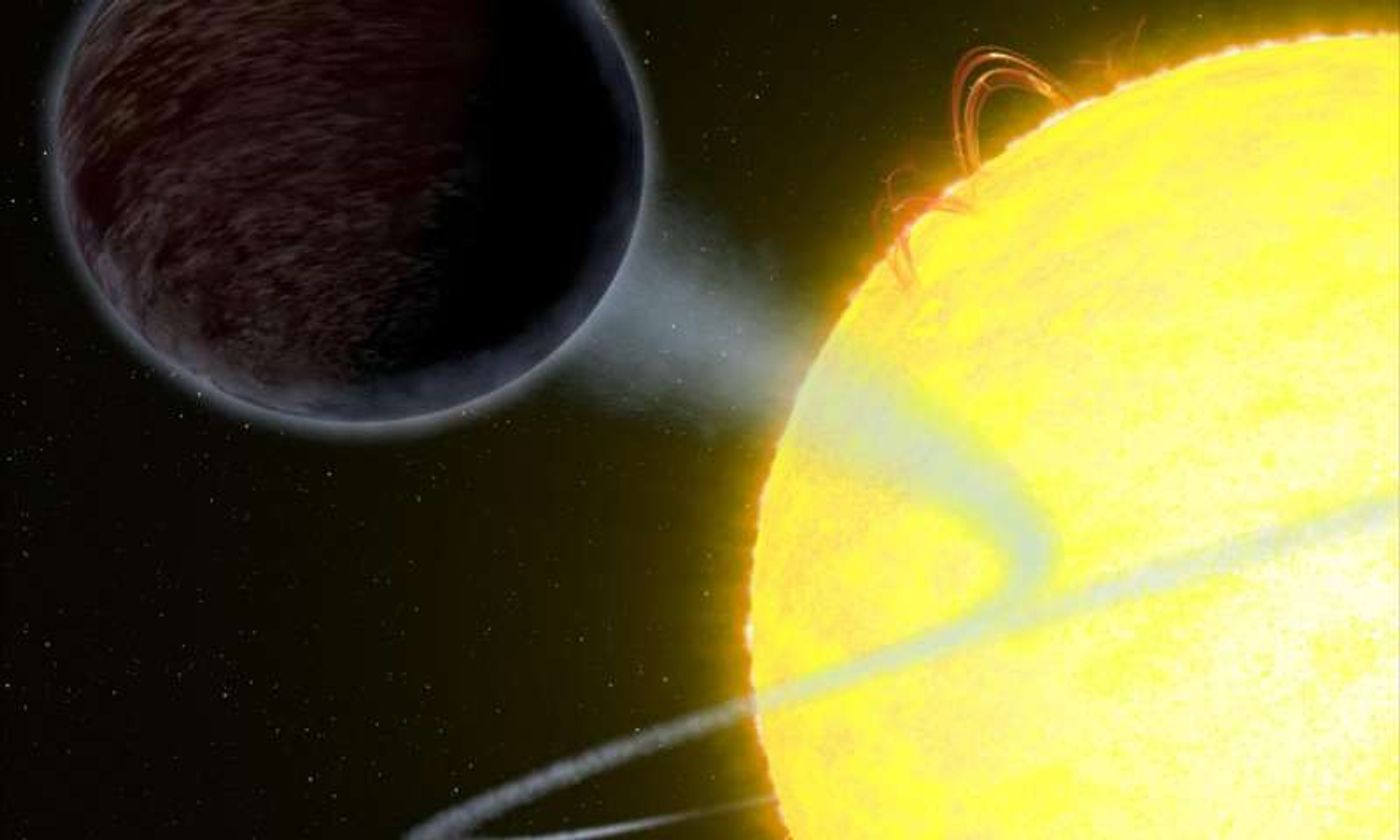Hubble Reveals the Light-Absorbing Qualities of a Hot Jupiter-Like Exoplanet
Astronomers from both McGill University in Canada and the University of Exeter in the U.K. used the Hubble Space Telescope to study a hot Jupiter-like exoplanet and found unique circumstances that they’ve never seen before. They've published their findings in The Astrophysical Journal Letters.
Image Credit: NASA, ESA, and G. Bacon (STScI)
Dubbed WASP-12b, the exoplanet in question resides in a system about 1,400 light years away from our Sun and is tidally-locked to its host star, WASP-12A, orbiting once every day from approximately 2 million miles away.
These circumstances enable the day side of the exoplanet to reach a scorching 4,600º Fahrenheit – far too hot for clouds and water vapor to exist. Although the night side is around 2,000º Fahrenheit cooler, it’s still incredibly hot.
The researchers describe WASP-12b as a low-albedo exoplanet that's “as black as asphalt.” Its inability to reflect light acts as the primary catalyst behind the mind-boggling heat retention, but the other factors surrounding its existence also play a significant role.
“We did not expect to find such a dark exoplanet,” explained study lead author Taylor Bell from McGill University. “Most hot Jupiters reflect about 40 percent of starlight. This new Hubble research further demonstrates the vast diversity among the strange population of hot Jupiters.”
In their estimates, reached with the help of Hubble’s Space Telescope Imaging Spectrograph (STIS), they indicate how WASP-12b absorbs up to 94% of the starlight from its host star. For comparison, most hot Jupiter-like exoplanets reflect up to 40% of their host star's light.
It’s so hot on WASP-12b's day side that water vapor-based clouds can't form there. If they could, they would reflect some starlight back into space. Cloud-forming conditions and temperature are each different on the night side, but that's irrelevant since it never faces the star.
Worthy of note, there are a plethora of hot Jupiter-like exoplanets similar to WASP-12b, but many aren't as hot because they don't orbit as closely to their host star.
“You can have planets like WASP-12b that are 4,600 degrees Fahrenheit and some that are 2,200 degrees Fahrenheit, and they're both called hot Jupiters,” she continued.
“Past observations of hot Jupiters indicate that the temperature difference between the day and night sides of the planet increases with hotter day sides. This previous research suggests that more heat is being pumped into the day side of the planet, but the processes, such as winds, that carry the heat to the night side of the planet don't keep up the pace.”
Related: Astronomers detect water on a nearby hot Jupiter-like exoplanet
Astronomers first discovered WASP-12b nine years ago. While it has been observed several times previously, these are some of the most detailed spectral observations of the exoplanet to date.
The study highlights the importance of getting a closer look at all the exoplanets we find; even some of those that we've already discovered could be hiding undiscovered secrets.
Source: McGill University









